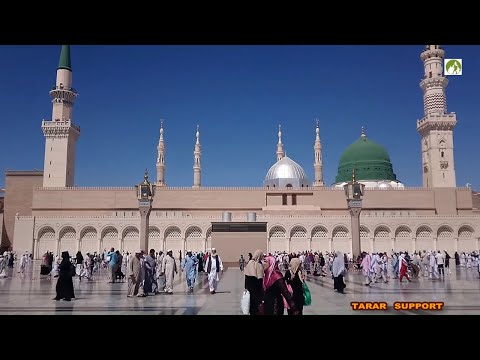
Nestled in the city of Medina, Masjid Nabawi stands as one of the holiest sites in Islam. Also known as the Prophet’s Mosque, it is the final resting place of Prophet Muhammad (peace be upon him) and a pivotal destination for millions of Muslims performing Hajj or Umrah each year. This mosque is not only a place for prayer but also a site steeped in deep spiritual and historical significance. This article guides you through what to expect when visiting Masjid Nabawi, offering insights into its history, architecture, and the etiquettes of visiting such a sacred space.
### Historical Significance
Masjid Nabawi was originally established by Prophet Muhammad (PBUH) himself, shortly after his migration (Hijra) to Medina in 622 CE. Initially a humble structure with palm trunks for pillars and stalks for a roof, it has been expanded and renovated extensively over the centuries. Today, it is one of the largest mosques in the world and embodies both the simplicity and grandeur that define Islamic architecture.
### Architectural Marvel
The current structure of Masjid Nabawi features a flat paved roof topped with 27 sliding domes on square bases. One of its most notable features is the Green Dome over the center of the mosque, under which lies the tomb of Prophet Muhammad (PBUH). The mosque’s umbrella-like canopies are another engineering marvel; they are designed to protect visitors from the harsh sun while also being aesthetically pleasing.
### Inside Masjid Nabawi
Entering Masjid Nabawi can be an overwhelming experience filled with emotion and spirituality. The atmosphere inside is one of peace and contemplation. The area around Prophet Muhammad’s tomb, known as Rawdah Ash-Sharifah, is particularly significant. It stretches from Muhammad’s tomb to his pulpit and is considered one of the gardens from paradise on earth. Pilgrims often try to pray in Rawdah, although it can get very crowded.
Visitors will notice intricate Islamic calligraphy along with detailed mosaics adorning various sections of the mosque. The expansive prayer hall, capable of accommodating hundreds of thousands of worshippers during peak times like Friday prayers and during Eid celebrations, resonates with tranquility.
### Walking In & Out: Etiquettes and Practical Tips
When visiting Masjid Nabawi or any other holy site in Saudi Arabia, there are several etiquettes that should be observed:
1. **Dress Appropriately**: Modesty is key in Islam; both men and women should ensure they are dressed conservatively when entering the mosque areas.
2. **Observe Silence**: Maintain a quiet demeanor out of respect for those engaged in prayer.
3. **Keep Cleanliness**: As cleanliness is partaken next to godliness in Islam, ensure you keep your surroundings clean.
4. **Follow Instructions**: Given its significance and size, there are specific paths marked for walking into certain parts like Rawdah Ash-Sharifah; following these routes helps manage large crowds efficiently.
5. **Photography**: Be mindful when taking photos; refrain from photographing worshippers or sacred areas including Rawdah Ash-Sharifah.
### Planning Your Visit
Non-Muslims are not permitted inside Masjid Nabawi but anyone can admire its exterior magnificence from several points around Medina City Center that also offer informative panels about its history.
For Muslims planning to visit:
– Consider visiting during less crowded times if possible.
– Prepare mentally and spiritually before your visit.
– Engage respectfully with local customs throughout your journey.
### Conclusion
A visit to Masjid Nababi provides an incredible chance for spiritual renewal and reflection on Islam’s rich heritage. While there are rules that must be observed respectfully by visitors; these help preserve both sanctity at this divine place ensuring that all who walk in leave out spiritually enriched more than ever before!
